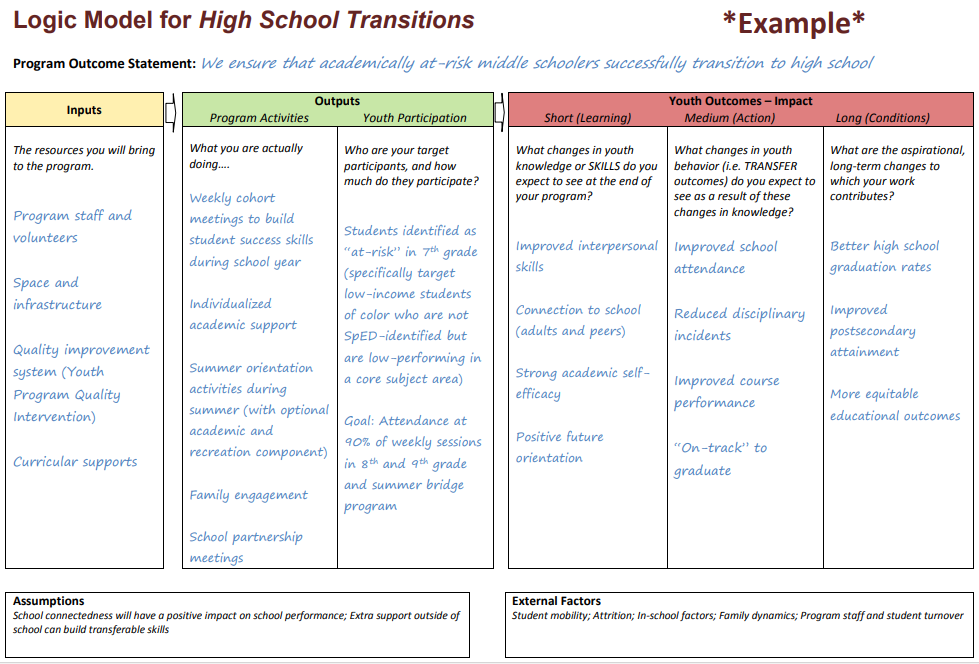As we ask youth in our classrooms and programs to set goals at the beginning of a new school year, I am reminded of the importance of setting our own program goals, and ensuring the activities we design match the outcomes we are hoping to achieve. In the context of a school-community partnership, this means identifying shared goals and discussing how school-day and out-of-school-time opportunities will complement or build on each other to enhance the students’ experiences and increase the likelihood our long-term goals will be met.
For example:
- If our shared goal is for students to feel a sense of belonging and connection to school, what are we doing in our after-school program to foster that feeling and link to the school-day experience?
- If our shared goal is for students to graduate on time from high school, college-ready, how will our skill-building activities in our after-school classes be different, but aligned with, what students are doing in school?
In our partnership cohorts, we have found the Logic Model to be a useful tool to help community partners clarify and articulate their goals, and design or adjust activities that support those goals. To get started, we ask the following questions from our Logic Model Facilitator’s Guide:
- What are the main things that your program does with young people?
- Can you describe the young people that you work with?
- What do you want young people to get out of your program?
- What are you assuming to be true in order to reach these goals?
- Are there things that might get in the way of your success?
A completed logic model, such as this sample for a high school program, has multiple uses:
- Program design and planning—How do your activities match the skills and knowledge you want youth to gain, and the behaviors you want them to produce as a result?
- Program evaluation—How are you measuring outputs (activities) and goals (outcomes)?
- Staff transitions—How are you introducing new program or school staff to the program? Is it clear why you are doing what you do?
Here are some examples of how the community organizations in our current Highline-based cohort are applying the logic model to their partnerships:
- Provoke discussion around how the program model should adapt to respond to external factors that may influence its success
- Outline outcomes and activities for more intentional programming for teen staff
- Introduce the program to a person recently hired into the coordinator role
- Set goals for outputs, such as “We are aiming for 85% daily attendance in our program”
Join us this month and take action to:
- Assess how well your program activities aligned with your program goals,
- Create a logic model for your program using this Facilitator’s Guide or Template, and/or
- Develop an Evaluation Plan that matches the outcomes in your logic model.



